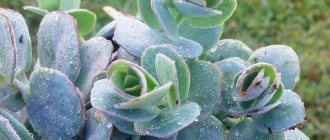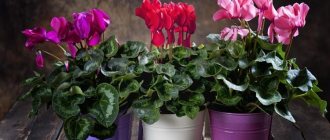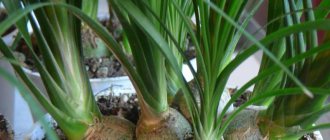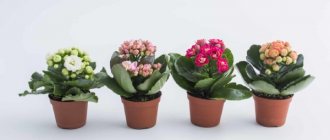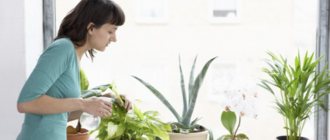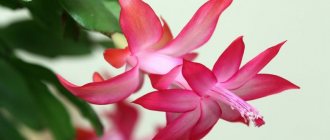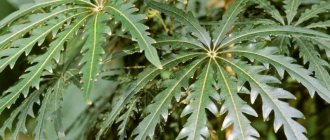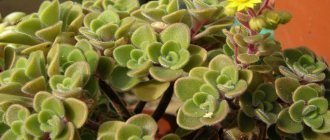What does Kalanchoe look like?
It is a genus of plants with enormous diversity. Kalanchoes differ greatly from each other in height, leaf size, stem shape and even color. It is best to study Kalanchoe in a photo. It is noticeable from them that the genus includes trees 4 meters tall and bushes 20 cm tall.
The plant is rich in shades. The leaves and stems range from bright green to blue-blue. There are both round and sharp leaf shapes.
Myth three. Adenoma is a precancerous condition.
An adenoma, which is a benign hyperplasia (tumor) of the prostate gland, has nothing in common with cancer. These are two different diseases. Another thing is that their symptoms are largely similar. First of all, this is a violation of urination, which is expressed in frequent urges that occur with monotonous consistency at night. The final period of the disease is sad: the bladder is so blocked by the tumor that it stops emptying completely. Therefore, if you feel that your bladder is not emptying completely, if you urinate intermittently for several minutes, if the pressure of your stream is weak, there cannot be two opinions. Hurry to the doctor! Otherwise, you risk developing a complication that is fraught with acute urinary retention and the urgent installation of a special cystostomy drainage tube, which you will have to walk with for several weeks, or even months, to relieve the burden on the bladder and kidneys. who also suffer. The formation of cameos in the bladder, pyelonephritis, and renal failure are frequent companions of advanced forms of adenoma. It’s even worse to miss prostate cancer - the incidence of which has recently taken first place among cancer diseases in the male population. In order to exclude a dangerous diagnosis, in addition to ultrasound and digital examination of the prostate gland, it is necessary to take an analysis for the level of specific prostate antigen (PSA) in the blood - the main marker of malignant prostate disease.
Varieties
If you need Kalanchoe with medicinal properties, then there are only three varieties:
- Kalanchoe Degremona, it has elongated leaves with a sharp end and teeth along the edge. It does not bloom, but reproduces well, producing babies on its teeth.
- Kalanchoe pinnate is a flowering plant with small pink-yellowish flowers. This house doctor is grown to produce medicines for the treatment of surgical, gynecological and dental diseases.
- Kalanchoe Blossfeld - It blooms with small white, red or orange flowers. The flowering period occurs in winter and spring. It has very distinctive leaves, they are fleshy and shiny.
Other species are also popular for growing Kalanchoe at home, requiring a minimum of plant care skills. But these three varieties have medicinal properties.
What to do if the reaction is negative?
Unfortunately, some mothers have experienced negative reactions from their children. After using Kalanchoe juice, children began to experience lacrimation, their sinuses became swollen, it became difficult for them to breathe, and swelling was observed. This is nothing more than an allergic reaction that could have been prevented if you had done an elbow test.
If an allergic reaction does occur, you must act quickly:
- Find an antiallergic drug in your medicine cabinet. For example, Zodak, Fenistil and so on.
- Be sure to look at what the norm is for your child’s age.
- Give him the opportunity to take this remedy.
- Apply cold soaks to areas that are very swollen after taking the drops.
- Then, call a doctor.
- Avoid using Kalanchoe juice to protect yourself from a runny nose.
Unfortunately, an unpleasant consequence can be Quincke's edema. It needs to be recorded in time, since in such a situation it will be necessary to act quickly. Be sure to take your child to the hospital, since only medical conditions can help fight such an unpleasant effect.
Delay can lead to dire consequences, as children often suffered serious health problems as a result of edema, and sometimes even ended in death.
If your child is allergic, but the test did not show any results, it is recommended to initially dilute Kalanchoe juice with water, gradually increasing its concentration.
Another negative manifestation may be:
- headache;
- blood from the nose;
- also unpleasant burning and itching.
This means that the skin inside is very delicate, which is not suitable for the aggressive component of Kalanchoe juice drops. Therefore, it is either necessary to greatly dilute the resulting composition, or to abandon its use.
If your nasal passage is infected and inflamed, it is recommended to treat it with a soothing ointment or apply ice to your nose. The unpleasant feeling will quickly pass.
Kalanchoe is a truly useful remedy that can be used even on small children
However, in everything you need to observe moderation and caution. Therefore, it won’t hurt to test the product on the elbow bend once again.
How to properly collect and store
The plant grows all year round. If you need a leaf, you can come up at any time and pick it. If Kalanchoe is being prepared for planned treatment, then the preparation is approached scientifically:
- stop watering, wait a week;
- cut off the lower leaves;
- wash the raw materials thoroughly in running water and wipe dry;
- keep in the refrigerator in the bottom fruit drawer for 5-7 days.
This step-by-step collection process allows the beneficial properties to develop and accumulate. Properly prepared leaves can be used to make infusions, ointments and other dosage forms.
Medicinal properties
Such a rich chemical set determines the long list of medicinal properties of Kalanchoe:
- Promotes rapid regeneration.
- Destroys pathogenic microorganisms and demonstrates good bactericidal and bacteriostatic properties.
- Inhibits the development of the inflammatory process.
- Stops minor bleeding, has a beneficial effect on blood flow, so it can help even with varicose veins.
- Solves problems of skin diseases.
The plant is used to treat female diseases; it promotes rapid healing of erosions, tears and cracks. Compresses with leaves help improve well-being in case of prostate adenoma and prostatitis. Children over 1 year of age and pregnant women can instill diluted juice into the nose for a runny nose.
Kalanchoe can be included in comprehensive weight loss programs. It helps activate the digestive system and tones the body.
Chemical composition
Kalanchoe leaves, which are the raw material for obtaining dosage forms, contain:
- a large number of micro- and macroelements (magnesium, aluminum, copper, calcium, iron and manganese), which have a positive effect on the course of redox processes, hematopoiesis, blood clotting reactions, and also participate in muscle function;
- enzymes - natural catalysts, protein organic substances that regulate metabolism, accelerating all chemical processes;
- bufadienolides are steroid substances that affect the tone of the heart muscle;
- organic acids: isocitric, malic, citric, oxalic and acetic acids, which have a choleretic effect, have a bactericidal effect, and prevent putrefaction in the intestines. They reduce the processes of autointoxication and help the effective absorption of calcium and food in general. They participate in the regulation of metabolic processes, like biogenic stimulants;
- tannins that have antimicrobial, astringent and hemostatic effects;
- polysaccharides;
- flavonoids (kaempferol, quercetin).
In addition to these useful substances, according to herbalists, during short-term storage of the leaf in the dark at low temperatures, biogenic stimulants accumulate in it. However, this theory has no evidence base.
It is believed that the rich natural composition determines the high antimicrobial activity of the plant, so it can be grown on windowsills for natural disinfection of indoor air.
In what form is it used for treatment?
After harvesting, Kalanchoe can be stored in different forms:
- infusion;
- ointment;
- tincture;
- decoction;
- juice.
For long-term use, it is better to make tinctures with alcohol; they retain the properties of plants for up to 1 year. You can add the plant juice to odorless olive or sunflower oil.
How to help with sinusitis
The plant concentrate helps to drain purulent contents from the maxillary sinuses, relieve swelling and increase the body's defenses against infectious agents. Immediately after instillation of the nose, the concentrate has an irritating effect on the mucous membrane, resulting in reflex sneezing and mucus from the nose begins to separate quite abundantly. After this, the patient feels an improvement in his condition.
In addition, Kalanchoe has an anti-inflammatory effect in case of inflammation of the maxillary sinuses. The juice of the plant has a vasoconstrictor effect, as a result of which, after instillation, swelling of the nasal mucosa is reduced and nasal breathing is improved. The juice also has an immunomodulatory effect, preventing the pathology from becoming chronic and the proliferation of mucous epithelium.
Kalanchoe in folk medicine
Its application is very wide! It treats scratches and helps maintain normal calcium levels in the body, which is especially important for diabetes. Tannins will protect the gastric mucosa during gastritis.
Kalanchoe also normalizes stool, improves appetite and relieves symptoms of colitis, gastroduodenitis and enterocolitis. It is added to liver preparations, and compresses are made with it to reduce hemorrhoids.
This is a great help for colds! Kalanchoe treats a runny nose, relieves coughing and symptoms of sinusitis.
What does it help with?
The plant is used to treat a number of diseases. It is recommended to use the plant for the treatment of the following pathologies:
- skin diseases: wounds, abrasions, burns, frostbite, polyps - polyposis, warts, ulcers, bedsores, trophic ulcers;
- oral diseases: stomatitis, bleeding gums, gingivitis, toothache and sore throat;
- colds: acute respiratory viral infections, acute respiratory infections, runny nose, cough, otitis media, rhinitis, sinusitis;
- joint diseases;
- blurred vision;
- varicose veins or varicose veins;
- hemorrhoids;
- gastrointestinal pathologies: peptic ulcer, stomach and intestinal disorders.
The plant can also be used in cosmetology to improve the condition of skin and hair.
Contraindications
The plant has contraindications for oral administration:
- severe diabetes mellitus;
- hepatitis;
- cirrhosis of the liver;
- oncology;
- joint diseases;
- bronchial asthma;
- reduced blood pressure;
- pregnancy.
External use is almost safe, you should be aware of allergic reactions.
Are fresh leaves good for eating?
The leaves taste bitter, so it is often mixed in salads with cucumbers. It also goes well with carrots, green salad, avocado, and fresh peas.
Kalanchoe can be added to a regular vinaigrette, but it works like a seasoning - it depends on the taste. If there are a lot of leaves, they will “clog” the main taste.
How to properly care for Kalanchoe
He is not whimsical, but you need to remember a few basic rules:
- The recommended temperature in winter is +15, and in summer – +20…+25 degrees.
- In the warm season, Kalanchoe loves sunbathing in the fresh air. It can be taken out onto the balcony.
- Do not place in drafts.
- Kalanchoe loves the eastern side, where there is sun until lunchtime.
- In summer, water 1-2 times a week, in winter 2-4 times a month.
- It is recommended to replant in the spring.
- There should be drainage at the bottom of the pot.
- Propagated by children, seeds and cuttings.
Pharmaceutical preparations based on plants
If you don’t have such a plant in your home, then you should look at the pharmacy for a drug that can be used immediately. When buying a product for a newborn baby, make sure that it does not contain alcohol, as this is contraindicated. It is also not recommended to choose homeopathic preparations containing Kalanchoe juice, because they contain microdoses. This will not be enough for effective therapy, and there will be no result.
Thanks to the regenerating properties of Kalanchoe, it was possible to create drugs that effectively help with burns, frostbite and various types of inflammation. And with the help of drugs that contain this plant, you can normalize the functioning of the gallbladder.
Before buying a product that contains Kalanchoe or aloe extract, consult a good specialist whom you trust! Take care of the health of your loved ones! And one more piece of advice: do not self-medicate under any circumstances!
//www.youtube.com/watch?v=Nj28KCI75wQ
Photo of Kalanchoe
Total
Category: Flower beds and flower beds
